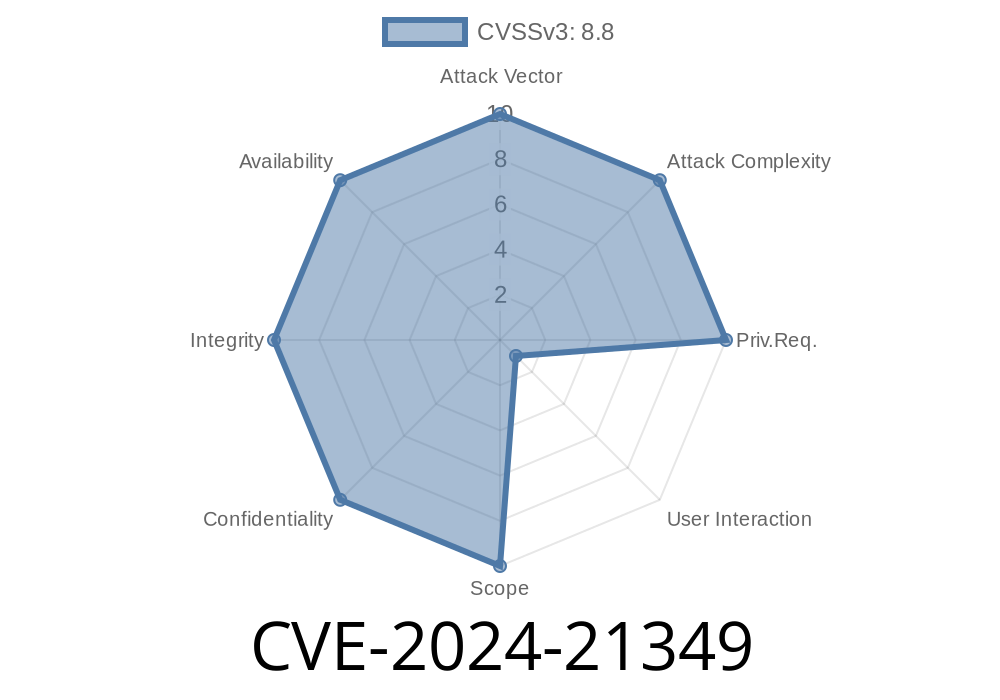A critical remote code execution vulnerability has been found in Microsoft ActiveX Data Objects (ADO), an integral component widely utilized in various Microsoft applications for data access and management. With an identifier of CVE-2024-21349, this flaw has been assigned the highest severity score. In this extensive guide, we will explore this vulnerability, examine the implications, and discuss possible methods to mitigate this weakness.
CVE-2024-21349: What is the vulnerability?
CVE-2024-21349 refers to a remote code execution vulnerability in Microsoft ADO that allows an attacker to remotely execute arbitrary code within the context of the current user. The flaw stems from the insecure handling of memory objects within the ADO component. Through a crafted script or web page, an attacker can trigger memory corruption and execute arbitrary code on the target's machine.
The Exploit
The exploit to remotely execute code revolves around the improper handling of memory objects while processing affected ADO components. By building an HTML page or script with a specific payload carrying malicious instructions, an attacker can exploit this vulnerability.
Here's a simplified code snippet demonstrating the exploit
<html>
<body>
<script>
function trigger_vulnerability() {
var malicious_payload = // Your malicious code here;
var ado_conn = new ActiveXObject("ADODB.Connection");
ado_conn.ConnectionString = // ConnectionString setup with ADO vulnerability;
ado_conn.Open();
ado_conn.Execute(malicious_payload);
ado_conn.Close();
}
trigger_vulnerability();
</script>
</body>
</html>
Original References
Researchers who initially discovered this vulnerability have documented their findings, providing a thorough understanding of CVE-2024-21349. You can find their original report and insights by visiting:
1. Microsoft's Advisory regarding CVE-2024-21349
2. NVD - National Vulnerability Database entry
3. Researcher's Paper detailing the exploit and possible mitigations
Implications of the Vulnerability
The exploitation of CVE-2024-21349 poses severe consequences, as it enables attackers to control the targeted system remotely. They could steal sensitive data, install malware, manipulate system settings, or even use the compromised machine as a launchpad to infiltrate nearby systems or mount a DDoS attack.
Mitigations and Recommendations
To protect your systems from CVE-202
Timeline
Published on: 02/13/2024 18:15:50 UTC
Last modified on: 02/13/2024 18:22:58 UTC
